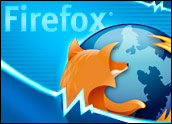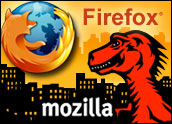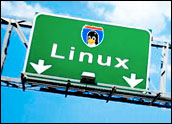
In his opening keynote speech at the 11th annual JavaOne developer conference, Sun Microsystems President and CEO Jonathan Schwartz outlined new Java solutions and open source plans in front of thousands of international attendees.
“It’s not a question of whether, but a question of how,” Schwartz told the audience. Sun Executive Vice President of Software Rich Green echoed his new leader’s words. These are words that Sun’s partners have been hoping to hear for years, but this is not the first time a pledge has been offered.
Just Talk?
Sun said it would submit Java to an international standards body some years ago, before it was established in the enterprise. The company did not complete the process of standardizing the platform, reasoning that if it opened up the source code, Java would fracture into several different versions. IBM pushed Sun to open source Java two years ago. Sun again declined.
Times have changed. Java is entrenched in the enterprise, and it seems unlikely that open sourcing the code would splinter the program. Developers are comfortable with Java. It runs on millions of application servers and mobile devices. Java has proven to be consistent; a variant on the code may not offer the same results.
“Sun seems to have finally recognized that community support around Java is dependent upon [the firm] improving its relationship with that community. So the pressure seems to be building. It doesn’t seem to be coincidental that this is coming only weeks after Scott McNealy stepped down as CEO,” Interarbor Solutions Principal Analyst Dana Gardner told LinuxInsider.
Still No Timeline
While Schwartz failed to offer a time line on open sourcing Java, he did discuss Java technology interoperability developments across industry platforms and the latest open source Java technologies. “Sun takes seriously its role as the steward of the Java community — a community that continues to evolve, bringing together now more than 1,000 companies and individuals, from open source advocates to automobile manufacturers,” said Schwartz.
Easier said than done, perhaps. The devil is always in the details, Gardner noted. Like many others, he is waiting and watching to see what elements of Java are open-sourced — or not — and under which license.
“I wonder if this is going to be a slow, long dribble over time,” Gardner added. “The community wants to see this happen quickly. They want to see openness in standards licensing and they want to see an inclusive amount of Java put under these licenses and not just a piecemeal approach.”
Open Maneuvers
Also at the conference, Sun said it is making source code available for its Web Services Interoperability Technology (WSIT), which enables operability between Java Technology and the Microsoft .Net Framework.
Additionally, the company introduced a new program for PC Original Equipment Manufacturers to distribute the Java Platform. Sun also introduced an enhancement to the Java SE license to make it easier to distribute with the GNU/Linux operating systems and OpenSolaris.
Finally, the company announced plans to open source several Java technology products to create a complete open SOA solution of middleware and tools including the Java Studio Creator and NetBeans Enterprise Pack development tools, Java System Portal Server, the Business Process Execution Language (BPEL) Engine and the first open source release from the SeeBeyond acquisition.




















































